Solar panels are a big investment, so it’s important to ensure that you’re getting the most out of them, maximising savings and ensuring that they will have the longest lifespan possible.
A solar PV system can operate for years and decades with very little need for maintenance, so it might be easy to forget about it.
But it’s a good idea to keep track of the performance and wellbeing of your solar panel array, considering the cost of investment.
Solar panel monitoring allows you to dig into the energy production of your solar PV system by comparing current and past output, as well as providing insights into the system’s health.
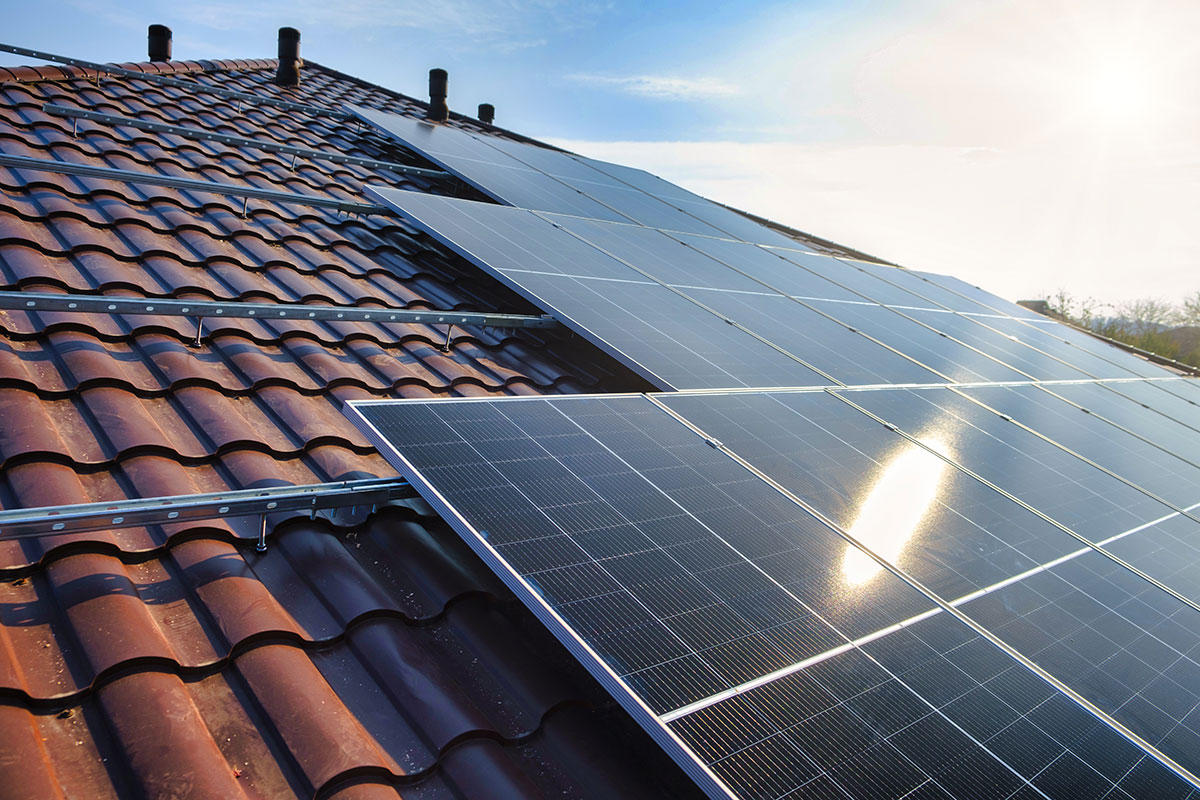
Table of content
What is a solar monitoring system
A solar PV monitoring system allows you to track information about your solar panels and other elements of your solar PV array.
This can provide data such as the energy production of your solar panels at any given time, your energy consumption, and the health of your solar panels or battery storage system.
Many platforms will also provide information about the energy consumption in the home, and any electricity being exported from your solar system to the grid.
A solar PV monitoring system will generally consist of hardware, the sensors and devices that track how the machinery is performing, and software, the data display for the information
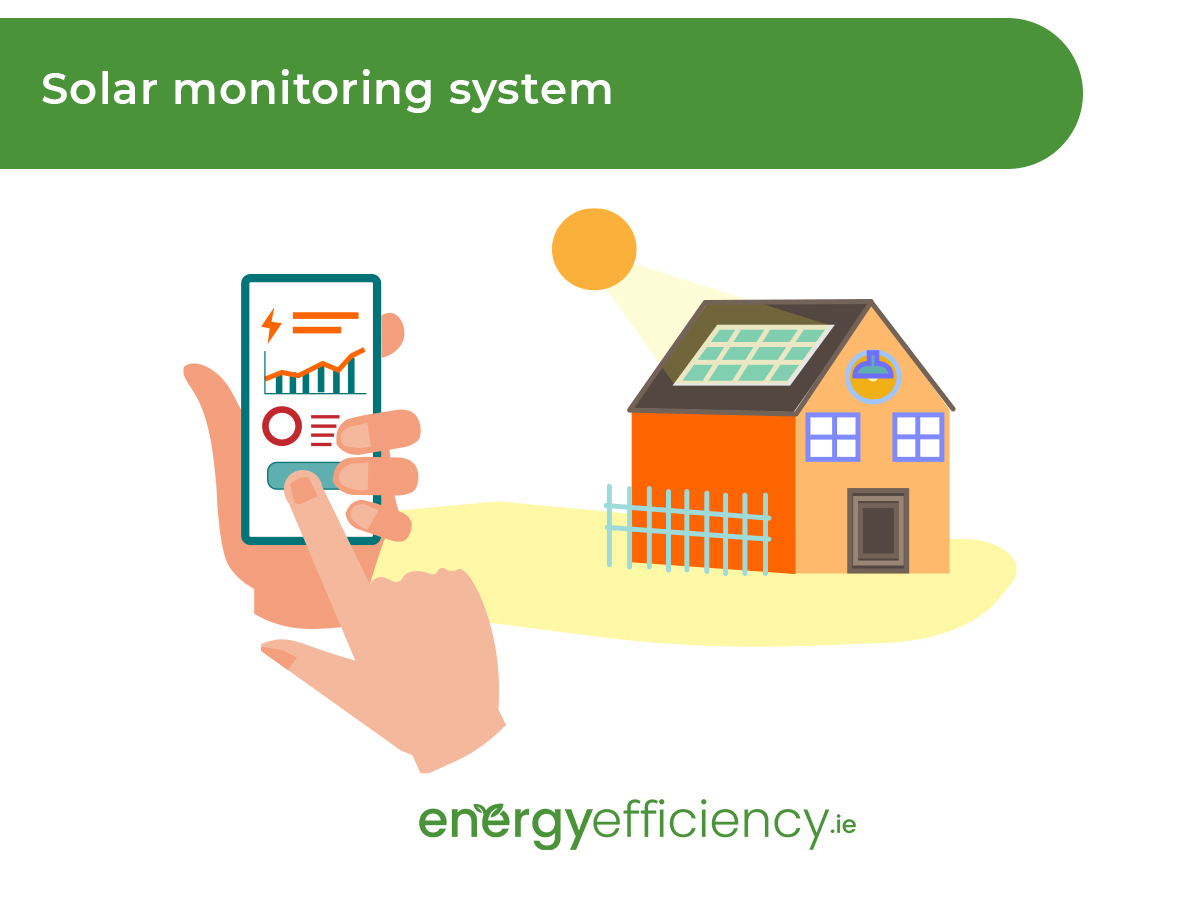
How do solar monitoring systems work
Solar monitoring systems are made of hardware and software components, and a system for displaying that data to the customer.
Monitoring sensors will gather data from solar panels or other devices. Depending on the type and brand of system you go with, the monitoring devices might gather data from each solar panel, the power inverter, or on your battery if you have one installed.
The most important part of the monitoring platform is the software, which provides system owners with a data display of all the information being gathered by the sensors and solar inverter.
This information is typically accessible through an app for a mobile device, or a web portal. Many systems these days will upload data to a cloud based monitoring platform which can be accesses easily from anywhere.
Many popular systems for solar panel monitoring can also integrate with a smart meter to provide measurement data on you energy usage and export to the grid, as well as what is being produced by your solar PV system.
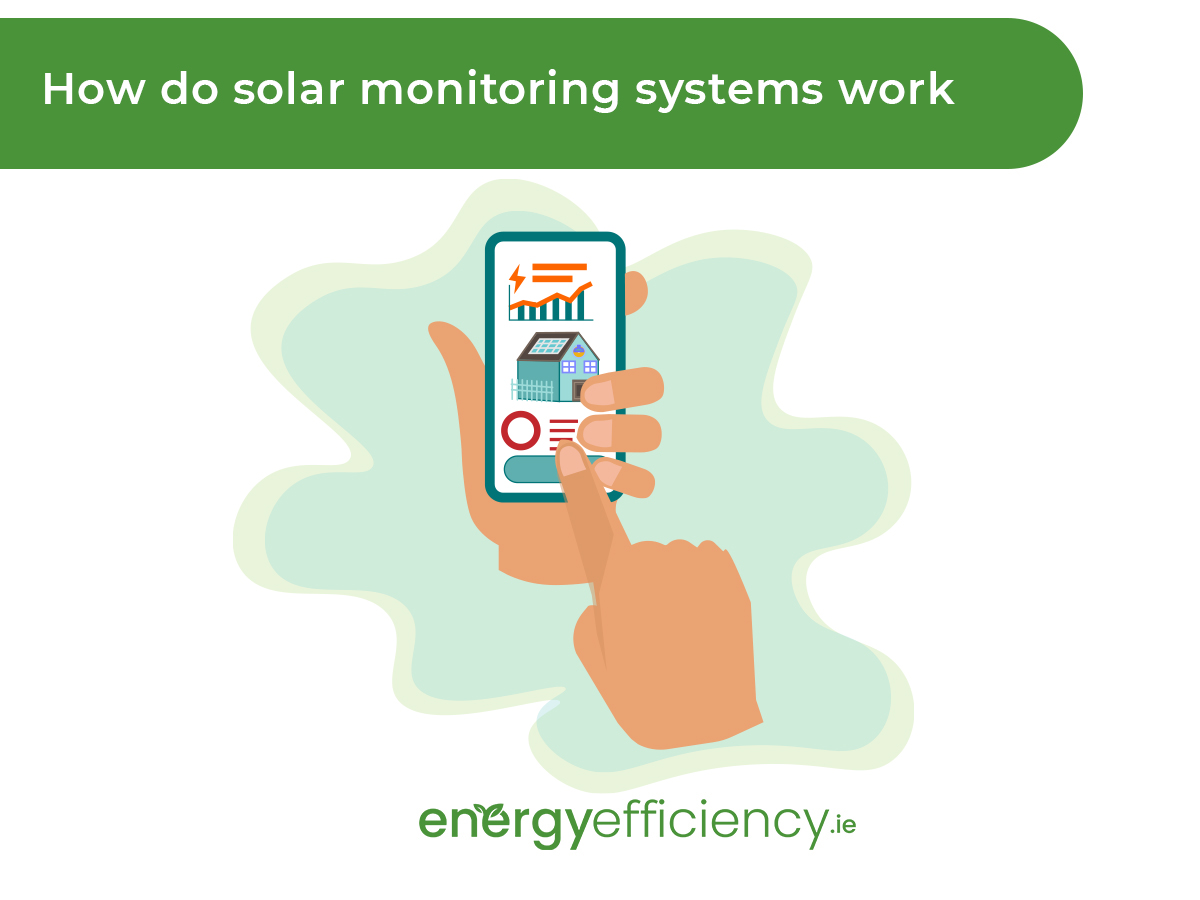
Solar Panel Monitoring
Solar Panel Monitoring is essential for maximising the energy efficiency of your solar PV system by understanding patterns in your energy production, as well as giving an early indication of a need for maintenance and repairs.
Solar panels systems will at their most basic involve monitoring data on the entire array which is captured at the solar inverter. But many modern systems will have a monitor installed on each solar panel, either through the use of microinverters or power optimisers.
These more advanced options will give data on the energy production of each your solar panels, and will also transmit data on any flaws with the solar PV array.
Many choices for solar PV monitoring also have the ability to integrate data from other devices which monitor energy usage in the home, electricity imported from the grid, or exported to it, as well as other devices such as a battery or EV charger.
Solar Battery Monitoring
If you have a solar battery installed as part of your solar PV system, then you will need to monitor data related to the flow of energy from the solar panels to the battery to ensure that it is not being overcharged, and that you are making the best use of the energy in that battery.
Information on the state of the battery can be either provided from the battery itself, or from a the central inverter.
Older batteries would only have very basic information on the voltage and charge level provided from the charge controller, which could often be external to the battery unit.
However, with modern integrated systems you can also control the battery from a web portal or app, with time controlled settings to use the stored energy when it is of most use, or to charge from the grid during night rate hours.
Benefits of Having a Monitoring System
There are multiple benefits of having a system in place to ensure that you are getting the best out of your solar panel system. These will help you to save money, and when well designed make it easy to keep track of the system health and performance.
You can compare your solar production with energy usage to make sound financial decisions, and detect any problems developing in your solar PV array before they become crippling issues.
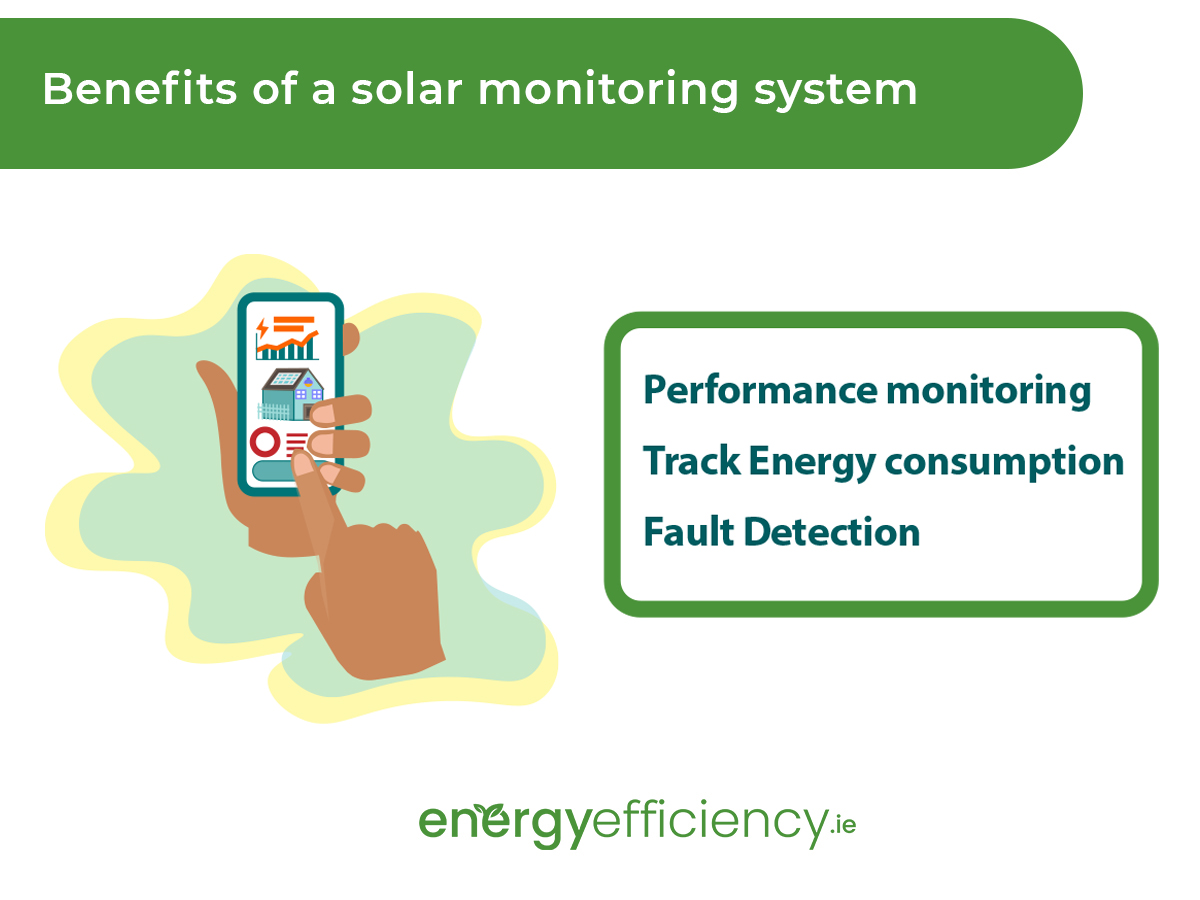
Performance Monitoring
Any solar panel monitoring system will be able to tell you how much energy is being produced by your solar system at any given time of the day. Using this energy data to see when your solar panels are at peak production can allow you to determine how to make the best use of them.
This could be used to connect your solar PV system with other accessories such as a battery, immersion diverter, or electric vehicle charger. Knowing when your energy production is highest can help determine when would be the best time to send power to them, and when to use it.
Track Energy consumption
Many systems these days will also allow you to track your household energy consumption in real-time, particularly if you have smart meter installed on your home.
Having that monitor of your energy consumption can help you to save money be seeing when and where you are using the most electricity, and changing your habits to cut down on excessive energy costs.
By tracking when and where you are using the most electricity, you can match your highest consumption activities to when solar production is at its peak.
Fault Detection
Solar panel systems can typically operate with little to no maintenance for years and decades. But that doesn’t mean that nothing will go wrong with them. It is important to keep on top of any system issues as they occur.
Automatic alerts can provide immediate fault detection in the event that there is something with the system’s health. The platform can give valuable insight into what has gone wrong with your solar PV system, and help with any necessary repairs.
In a system with a sensor installed on each solar panel as well as through the inverter, it is also possible to pinpoint exactly where any fault is developing in the system.
Solar Monitor Features
A good solar monitoring platform has a number of key features that will let you get the most value for money out of your solar PV system, while also making life easier for you keeping track of the information.
What features your system will have depends on what device you have installed. Some potential features to keep a lookout for are:

7 Years
A typical solar installation is fully paid back within 7 years. All solar panels we recommend are under warranty for 25 years, so you will enjoy at least 17 years of free energy generation.
0% VAT
As of 10 May 2023, the government has removed all VAT on solar installation and solar panel supply. This means solar has never been more affordable!
Government Grants
There is a range of government grants available for all new solar installations. Our team will guide you through the application process.
Other Popular Solar Panel Monitoring Systems
There are a large number of systems available to help consumers monitor their solar PV array and other devices. When picking one, you should decide what features you need and want.
Just a few of the most well known solar PV monitoring brands are:

SolarEdge
SolarEdge systems are a highly popular brand in Ireland and globally, allowing users to monitor each module in a solar array. Their app can track the energy produced, your self consumption, and grid exports. Their products are also popular for the SolarEdge power optimizer fitted to each solar panel in the entire fleet, ensuring that each is working at its maximum output.

Panasonic
Panasonic are well known manufacturers both solar panels and battery systems, and as result have their own dedicated SmartBox to monitor energy consumption, production, and battery controls. It also allows for a seamless switch to backup power in the event of a blackout if you have dedicated circuits installed.

Sense Energy Monitor
Notable for its easy installation and extremely minute information. The Sense monitor can not only integrate with your solar panels, but provide extremely detailed information on what devices and systems in your house are using the most power. Along with breaking down usage by day, week, or month, this helps users see how to save money.

SMA Energy App
The SMA Energy App monitors solar power production across each module in your system, along with electricity consumption. With this, and by providing forecasts of future production, it provides users with recommendations to optimize their power usage and save on electricity.
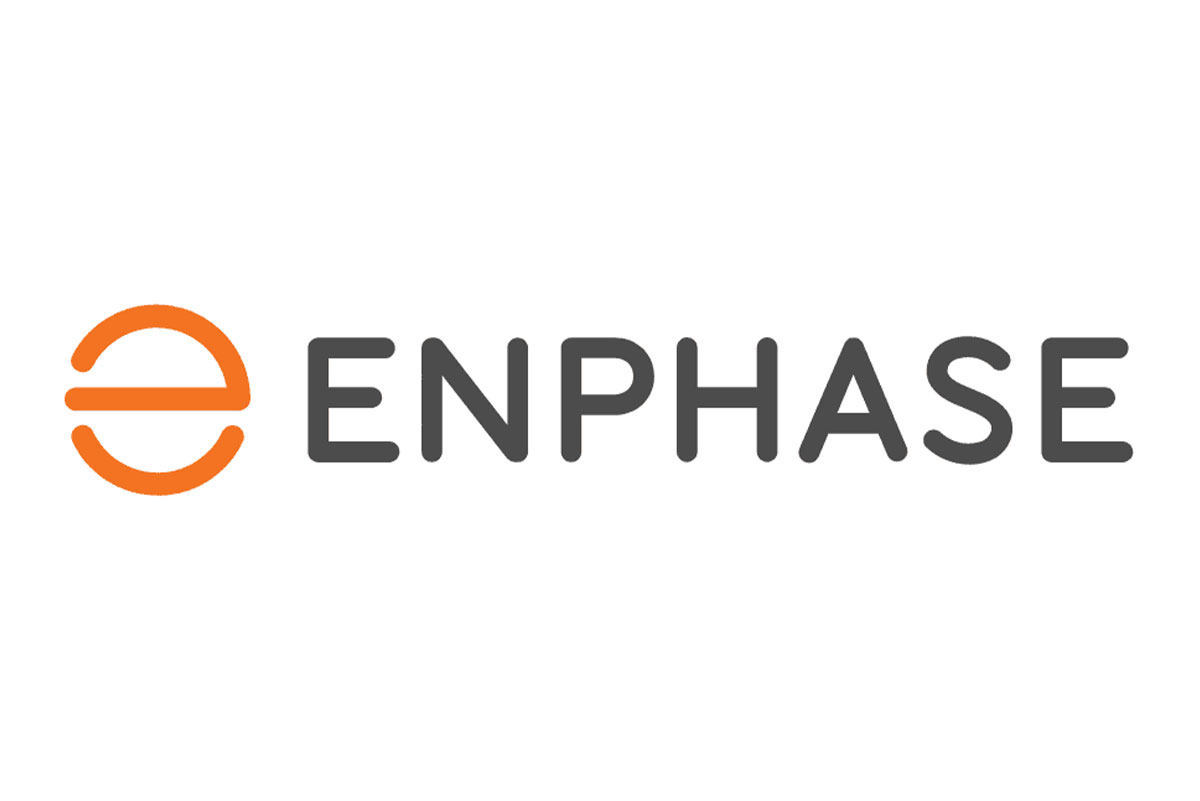
Enphase
Enphase microinverters send data from each solar panel to their cloud based monitoring platform, where it can be monitored either through their app or web portal. Popular for their clean easy to read graphs or real time and historical data, which can be combined in multiple ways. The Enphase inverters also monitor the health of your solar panels, and provide troubleshooting for maintenance.
Learn More About Solar Panel Monitoring Systems Today
So we’ve seen that solar monitoring systems help with the all important goal of solar panels, saving you money on your electricity bills.
Take an assessment here and find out how much you can potentially save by having solar panels installed.


